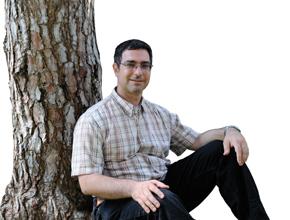Scientists began using laser beams to selectively break bonds between the atoms in a particular molecule without damaging other chemical bonds

Breaking up can be a constructive action, sometimes. When it comes to chemistry, the correct breakdown of one molecule may create desirable products with great economic value. Along with traditional and routine methods for performing chemical reactions, many scientists, in different parts of the world, try to use laser beams to selectively break bonds between the atoms in a certain molecule without damaging other chemical bonds. It is about the development of a kind of "chisel" of light, which is activated in short flashes. A series of such flashes can excite a molecule, or part of it, and shape its shape as it gradually returns to its unexcited state. This process has been demonstrated before, albeit with relatively low efficiency. Since then, many studies have been carried out in order to improve the efficiency of the process.
Scientists at Princeton University have implemented a method in which the laser "learns" and performs a kind of "natural selection" between random series of flashes, so that the series that achieved greater efficiency survive and continue to the next stage, where they compete again for their place. The computer algorithms that perform the calculations of this "natural selection" are called evolutionary algorithms.
The main variables examined in this selection process are the time and frequency of the laser beam, which maintain a sort of relationship of spouses who complement each other. Prof. David Tenor, from the Department of Chemical Physics at the Weizmann Institute of Science, says that the mathematical relationship between time and frequency of the laser beam is similar to the mathematical relationship between other partners in quantum theory: space and momentum. "This similarity", he says, "raised the possibility of creating a kind of lattice in space, in each of whose nodes there is a 'Gauss bell'" (the location of the nodes will create a complete, albeit finite, structure or base). Each of the "Gauss bells" in the lattice represented the properties of one laser flash, and all of them together represented the characteristics of a series of flashes that can be described as a kind of unique "key of light" suitable only for the breaking of a specified chemical bond, and does not harm the other bonds.
Two groups of scientists in Germany are conducting experiments based on Prof. Tenor's theoretical works: Prof. Gustav Gerber from the University of Wurzberg and Prof. Tobias Brixner from the same university. Gerber and Brixner (then as a research student in Gerber's group) demonstrated for the first time the use of a "learning laser" for the practical breakdown of molecules. Prof. Tenor says that the ability to accurately examine the properties of each of the flashes that make up the "key of light" may help design particularly effective "keys" that could be used as powerful tools in the future chemical industry.
In short: the question: can a laser system learn?
The findings: Institute scientists have contributed to an evolutionary improvement in the efficiency with which a laser beam can control chemical reactions.
laser beams
A laser beam is created when atoms are excited (through light radiation or through an electric current), and as a result move to a higher energy level, then "fall back" while emitting the energy stored in them during the excitation process, in the form of photons, which are light particles. The light emanating from the excited matter atoms is characterized by two prominent properties. The first property is a wavelength determined by the physical properties of the emitting atom (each substance emits light waves in its own unique range). The other feature is expressed in the fact that the light waves emitted in this way are parallel to each other. This is how a laser beam is created that can be used for industrial and medical purposes.
